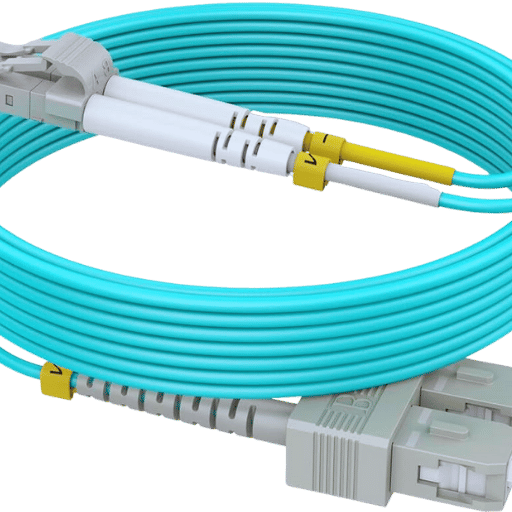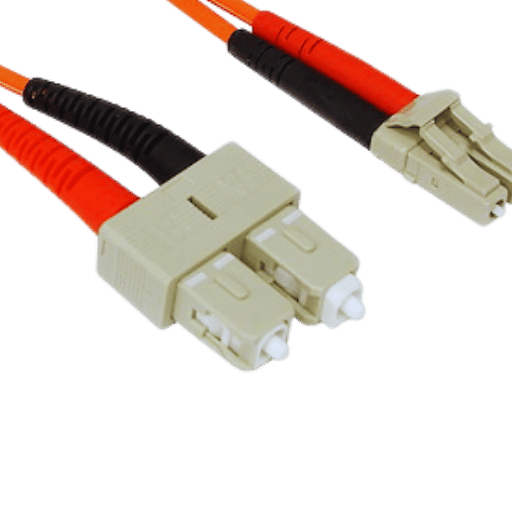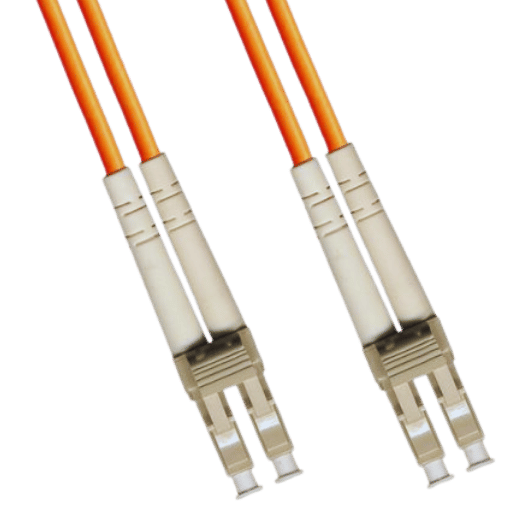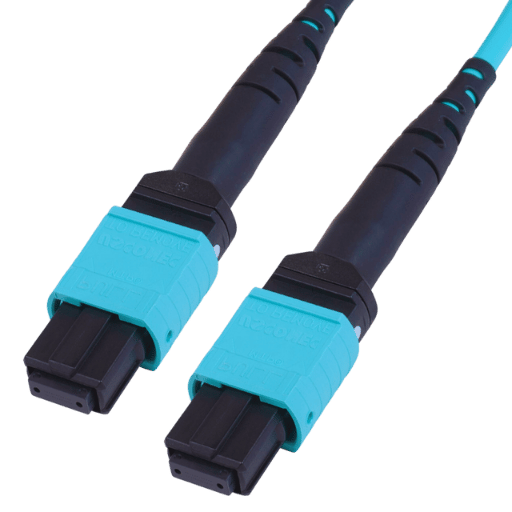Present-day telecommunication and data transmission systems require multimode optical fibers. These cables are built to carry several light modes simultaneously, allowing for faster communication over limited distances than single-mode ones. This paper aims to discuss everything about multimode fiber optic cables, including what they are made up of, how they function, where they can be used best, and why anyone would need them anywhere else. We will look into such things as data centers, LANs, and enterprise environments, among many others, while investigating these intricate wonders to show their significance in different areas, thus giving people enough knowledge to enable them to select the right type of fiber optics for their specific needs.

Light signals are used by fiber optic technology to transmit data over great distances with little loss. It works based on the principle known as total internal reflection, where light passes through a glass or plastic core surrounded by a cladding that reflects it back into the center. There are two primary types of this technology represented by multimode and single-mode fibers. For shorter distances, multimode fibers can support several light paths; however, for longer ranges and higher bandwidths, single-mode fibers allow only one path for light transmission. Fiber optics have immunity against electromagnetic interferences and offer better security than copper wires which makes them excellent tools for high-speed telecommunication systems as well as data networks.
Multimode and single-mode fibers are different because of their core diameter and the number of light modes that they can carry. The core diameter in multimode fiber is larger than that in single mode fiber. It usually measures 50 to 62.5 micrometers, which allows multiple modes of light to propagate simultaneously. This feature explains why it supports short distance transmission for a maximum of 2km, making it ideal for data centers and LANs.
On the contrary, single-mode fiber has a smaller core diameter that ranges from 8-10 micrometers only allowing one mode of light to travel through at any given time. The design reduces modal dispersion thereby enabling longer distances covered during transmission—up to 40 km or more—and higher data rates as well.
Moreover, single mode fibers require laser light sources for effective operation while multimode fibers often use LED light sources. Hence, whether to choose between multi-mode or single-mode fiber optic cables will mainly depend on such factors as networking needs specificities; distance coverage requirements; applications bandwidth capacity demand among others.
For a wide range of uses, multimode fiber optic cables are advantageous. One way is that the larger core diameter makes it easier to connect light sources with them, this in turn reduces the cost of installation and simplifies the process of termination. This simplicity is especially useful when there is need for quickness in setting up things like data centers or LANs.
Another advantage offered by multicomponent systems cable is that it can send signals over short distances without losing them due to many modes. This means that such cables have high integrity levels which makes them suitable for applications with heavy bandwidth requirements within limited ranges where consistent performance must be ensured all times.
Lastly, multimode fibers are generally cheaper than single mode fibers. Apart from using cheap LED lights as sources of illumination they also require less expensive materials in general thus providing affordable alternatives for organizations planning on establishing efficient but cost effective network infrastructures.

There are four types of multimode fiber optic cables: OM1, OM2, OM3 and OM4. Each of these is intended for different uses and has various performance characteristics.
Optimizing your network’s performance is the most important thing to do when choosing a patch cable. Keep in mind the following:
Evaluate these factors critically lest you end up having a poor-performing system, thus shortening its life span.
While analyzing cable specifications and performance, one must look at some main parameters like data transfer rates, distance capabilities, connector types among different standards.
Through comparing these specifications methodically users can choose what options are best considering specific application requirements and operational environment towards maximizing their networks’ potentials.


For the effective identification and fixing of issues with fiber optic cables, follow these steps:
By going through these points step by step, many fiber optic cable problems will be identified correctly, thereby leading to rectification, which provides dependable network performance.
You need to replace the fiber patch cable in the following cases:
To keep your fiber network running efficiently at all times ensure these areas are monitored regularly and acted upon accordingly.

The key reason why multimode fiber optic cables are popularly deployed across different industries and businesses is that they can carry a lot of data at once and do not cost much. The most common area where they are used is in corporate local area networks (LANs) for transmitting information. When it comes to manufacturing, multimode fibers allow machines to communicate with control systems, thereby improving how things are done within the industry setup. They also form part of data centers that require high-speed links for server communications and the provision of cloud services. In educational institutions, these cables enable networking throughout the campus, thus ensuring that students and staff members enjoy seamless connectivity from any point within the school compound. Given their versatility coupled with their ability to handle information reliably, multimode cables remain widely used in various fields.
In places where people live, fiber optic cables with several modes are being used more and more to support fast internet services, which in turn improve the streaming, gaming, and online chatting experience. They help make sure that data is transferred without fail between switches, routers, and devices so that many users can have access to large amounts of bandwidth with minimum delay. Also, multi-mode fibers are necessary for strong links between different smart-home gadgets like security systems or home automation systems as smart homes continue growing larger every day. They are cheaply implemented and easily installed, thus making them the preferred choice among customers who want effective solutions for their home networks.
The recent advancements in fiber optic technology have radically increased the speed, volume, and efficiency of data transfer. One of the most significant improvements is reflected in single-mode fibers, which now offer support for more than 100 Gbps data rate over long distances with minimum signal loss. Innovations like wavelength multiplexing (WDM) have led to a situation where many different channels can share one fiber, thereby increasing the bandwidth further. Moreover, because of bend-insensitive fibers, it has become possible to improve installation flexibility, which reduces the risk that could be brought by tight bends on cables that may lead to the degradation of signals. It can also be said that continuous investigations being done on photonic crystal fibers allow us to use higher amounts of information for communication through fiber networks. All these findings show how variable this technology is and its importance in meeting the ever-increasing desire for high-speed internet connectivity as well as communication services.
A: Multimode optical fiber is a type of optical fiber that can carry more than one light ray or mode, enabling data transmission over short to medium distances. It is commonly used in local-area networks (LANs) and data centers.
A: The difference between these two lies in the size of their fiber core, as well as the amount of information each can transmit. Compared with single-mode fibers, multimode ones have larger cores through which several light modes may travel, while single-mode fibers only allow for transmission along a single path that supports long-range communication.
A: Some examples include OM1, OM2, OM3, and OM4, among others; for instance, OM4 cables possess high bandwidth capabilities, making them ideal candidates for 10GB, 40G, or even 100G Ethernet applications.
A: An LC Fiber Patch Cord, also known as an LC fiber patch cable, refers to any kind of connection where both ends feature an LC connector. Due to their small form factor, these are widely used in environments with high-density networking needs.
A: Being plenum-rated implies that such cables have been coated using fire-retardant substances that emit minimal smoke when burned. Plenum spaces like air ducts and drop ceilings demand installation with such cables, including those designed for use as plenum-rated multimode options.
A: A duplex fiber-optic patch cable combines two fibers in one cable jacket. It allows for bidirectional data transmission, which means that data can be sent and received at the same time. Networking environments require duplex fiber-optic cables to facilitate bidirectional communication efficiency maintenance.
A: Single-mode applications often use OS2 fibre because it performs better over longer distances, usually up to 10km or more, without much attenuating the signal. This makes it perfect for high-speed communications, where large amounts of information need to be transmitted across a network using only one wavelength.
A: Yes, certain types of cables would work best with 10 Gigabit Ethernet. For instance, you could use multimode OM3 or OM4 fibers, which have enough bandwidth to support this speed efficiently over shorter distances.
A: OFNR (Optical Fiber Nonconductive Riser) listed cables or riser-rated cables should be used when installing them vertically, like between floors in buildings. These types are fire-resistant and meet NFPA70 standards, making them safe firewall penetrations within walls designed in such ways that may act as potential hazards during emergencies caused by fire outbreaks inside structures where people live or work occur frequently.
A: Duplex fiber optic cables enhance network performance significantly because they allow simultaneous bidirectional transfer of data packets between different devices connected to a local area network (LAN). This eliminates any possible delays brought about by one-way transmissions, thus ensuring smooth flow and maximum utilization of bandwidth within densely populated areas where many users share limited resources and require constant access to high-volume digital content simultaneously so that tasks can be completed quickly.